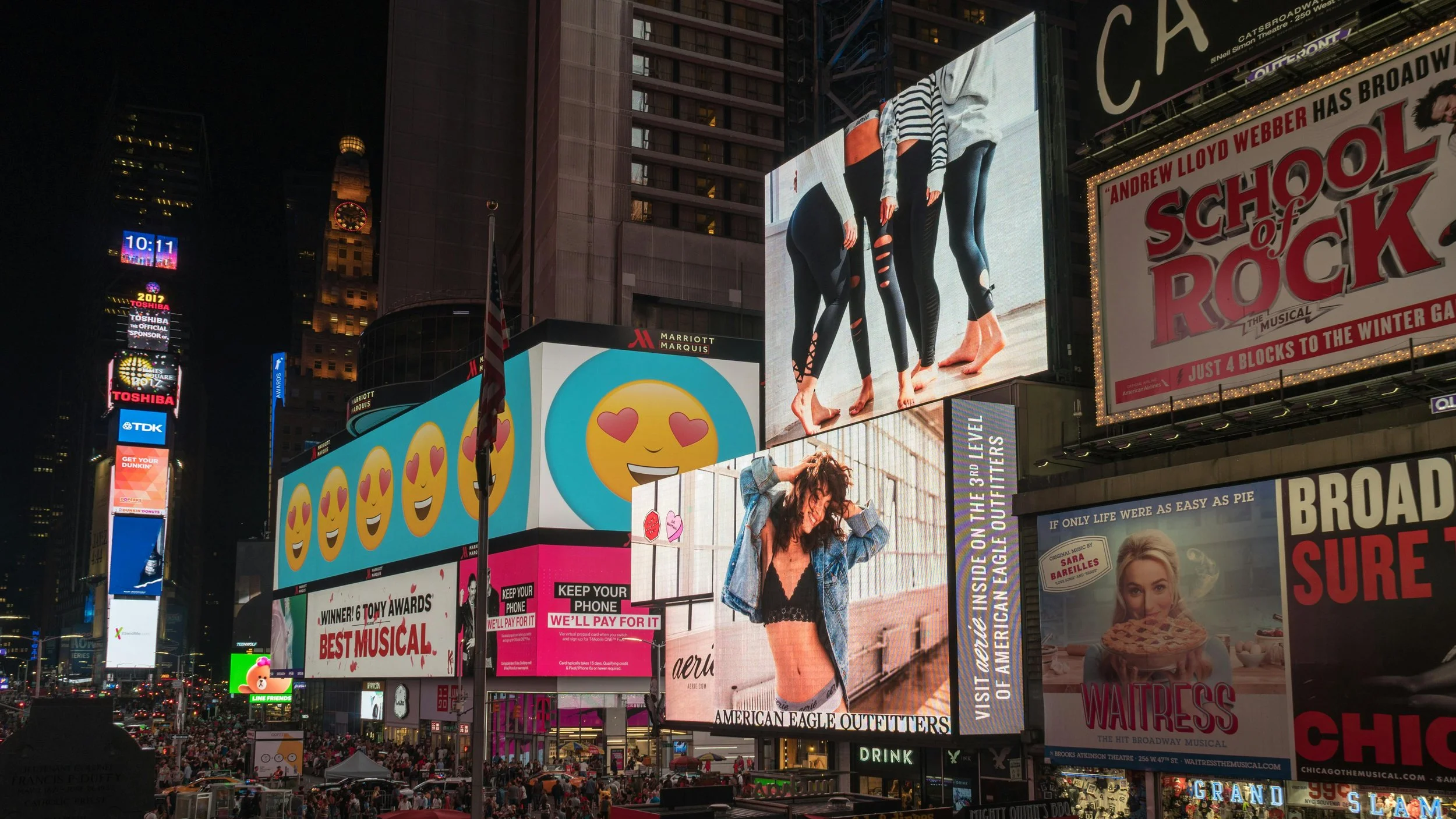
Sustainable Media Planning: How to Optimise for Performance & the Planet
The Pressure on Media Teams to Deliver Performance and Cut Carbon
Media teams are navigating two equally urgent demands, the traditional: budgets need to go further, campaigns need to consistently deliver reach, results, and impact, plans must flex across channels, formats, and markets. But increasingly, they must also reduce their environmental impact.
The carbon cost of media is no longer invisible. It’s measurable, reportable, and in many organisations, already embedded in procurement targets, governance reviews, and board-level scrutiny. But for most planning teams, the tools to act on that data meaningfully and without compromising performance still don’t exist.
On one side, you have mature models that optimise for business outcomes: MMM, econometrics and performance forecasters. On the other, a growing set of tools that calculate the carbon footprint of a media plan and suggest ways to reduce it. The problem is that these two systems rarely talk to each other.
Asking media leaders to cut emissions without showing how it affects commercial impact is an impossible, and frankly unfair, ask. These decisions aren’t made in isolation because the goals aren’t in isolation. Performance and sustainability are now shared responsibilities. They deserve a shared planning model.
“Asking media leaders to cut emissions without showing how it affects commercial impact is an impossible, and frankly unfair, ask.”
Understanding Media’s Carbon Footprint and Why Every Impression Matters
Media has a carbon footprint and it’s substantial. Digital advertising is estimated to produce between 2.5% and 3.5% of global CO₂ emissions, putting it on par with aviation. Every impression contributes. And in large, multi-market campaigns, those emissions add up fast. A typical media campaign can deliver the same emissions as a round trip from London to Boston.
But not all media is created equal. Some touchpoints are inherently more carbon-intensive than others. Formats like programmatic video, CTV and rich media tend to carry a higher environmental cost per impression, while static display, OOH, and audio are often significantly more efficient. A recent Scope3 analysis found that emissions per 1,000 impressions can vary by more than a factor of three across formats even within the same campaign.
Waste amplifies the problem. A joint study by Ebiquity and Scope3 of 116 billion impressions found that 15% of media spend was wasted, largely due to excessive frequency, non-viewable ads, and placements that failed to deliver meaningful outcomes. That 15% represents not only lost budget, but emissions that delivered no business value. On average, digital ad inventory carries around 670 grams of CO₂ per thousand impressions, but the worst-performing placements emitted more than 80 times that.
It is an inescapable fact that media, like most human endeavours, has an environmental impact. But plans that deliver the right reach, at the right frequency, through the most effective channels are not just better for business, they’re also better for the planet.
80x
Difference in emissions between the greenest and most polluting campaigns
1.7bn
Number of wasted impressions in a study of 116 bn impressions
3.5%
Media’s contribution to global emissions, on par with the aviation industry
How the Media Industry is Responding to Sustainability Demands
The industry recognises the challenge — and is starting to act. Some of the most notable developments include:
Advertisers are integrating carbon into KPIs
Global brands are now including emissions metrics directly in briefs and planning requirements, making sustainability a core success measure rather than a reporting afterthought.
Ad Net Zero launched a Global Media Sustainability Framework
Introduced in mid-2024, it standardises how emissions are measured across six major channels (TV, digital, print, audio, outdoor, cinema). Developed with input from Unilever, Diageo, Google, and the major holding groups, it aims to create a shared “carbon currency” akin to viewability or audience ratings.
Agencies are embedding carbon intelligence into tools
GroupM rolled out an omni-channel measurement tool built on Scope3 data
Dentsu has integrated carbon scoring into its core planning platforms
WPP has committed to decarbonising its media supply chain by 50% by 2030
Brands are experimenting with selective, emissions-aware buying
The ANA’s Sustainability in Media Planning study saw brands like Coca-Cola and Mondelez test green media marketplaces and curated inclusion lists to avoid high-emission inventory.
Formats are being reassessed for carbon efficiency
A Billups and Cedara cross-channel study found that OOH can be up to 3x more carbon-efficient than comparable digital ads. The takeaway isn’t to drop digital — it’s to measure reach with environmental cost in mind.
To make meaningful progress on sustainability, we need to ensure it aligns with commercial goals
While it is encouraging that more tools are being developed that create awareness around the environmental impact of media, awareness is not enough.
Simply showing a media leader their plan emits five tonnes of carbon doesn’t move the budget. In fact, research into behavioural motivation suggests that environmental goals fail to take hold when they don't connect to individual or team performance objectives. According to self-determination theory, goals are most likely to be achieved when they are “self-concordant”, or in other words, when people see those goals as aligned with their own values and motivations.
In business, it has been demonstrated clearly that sustainability efforts work best when they reinforce commercial objectives such as promoting efficiency, risk reduction, or innovation rather than fighting against them. A recent Aspen Institute paper emphasizes that environmental investments deliver the most value when they are “closely linked to the company's business strategy.” Put simply, green goals succeed when they’re integrated with performance priorities, not when they pull marketers in a different direction.
What does this mean for media? It means carbon data must be part of the same optimisation logic that drives campaign decisions. Media leaders aren’t being asked to choose between sustainability and performance, they’re being asked to deliver both. And success comes only when measurement tools reflect that reality.
“Simply showing a media leader their plan emits five tonnes of carbon doesn’t move the budget”
Introducing RCQ-E: A Framework for Sustainable Media Planning
RCQ-E was built to solve the problem media teams are now facing; how to deliver performance and reduce emissions in the same plan.
RCQ-E is a planning tool that extends the three core dimensions teams already optimise for — Reach, Cost, and Quality (or impact) — by adding a fourth: Emissions. But the power of RCQ-E isn’t just in adding another variable. It’s in how it algorithmically makes recommendations that balance all four.
It’s a practical, decision-making tool, not a dashboard or calculator. It provides a data-driven data point that helps planners model trade-offs, test options, and build media plans that are effective, efficient, and environmentally aligned. It does not just say how much carbon your plan produces, it creates the optimal, data driven plan to maximise your business performance while minimising your environmental impact.
RCQ-E is also built for real-world application. It’s lightweight, low-cost, and scalable. In mature, data-rich markets, it can run on detailed channel performance and emissions inputs. In emerging markets or lower-data environments, it uses benchmarks and high-quality proxies to deliver reliable outputs without adding complexity. That makes it usable across brand portfolios, market types, and planning teams providing a shared, structured way to optimise in a consistent, data-led way.
What RCQ-E Delivers
-
Hit Your Reach
Ensure your plan delivers the scale you need to deliver brand outcomes
-
Manage Costs
Identify the touchpoints that will deliver the best ROI
-
Optimise for Impact
Leverage performance data and human expertise to identify the best performing channels
-
Make it Green
Creates the optimum media plan to deliver your goals in the most sustainable way possible
Why Media Teams Need Better Planning Tools for Sustainability
The future of media planning is not about choosing between performance and responsibility. It’s about optimising for both. And that only happens when the tools fit both purposes.
RCQ-E doesn’t ask media teams to change their ambition. It gives them the means to deliver it in ways that are structured, adaptable, and accountable across markets.
The best way to make sustainable media happen isn’t to bolt carbon onto the end of the plan. It’s to embed it in the decisions that shape the plan from the start.
That’s where change sticks. That’s where better outcomes begin. And that’s where performance and the planet start pulling in the same direction.
Meet the Team
-

Antonia McCahon, Founding Partner
-

Matt Rix, Senior Director





